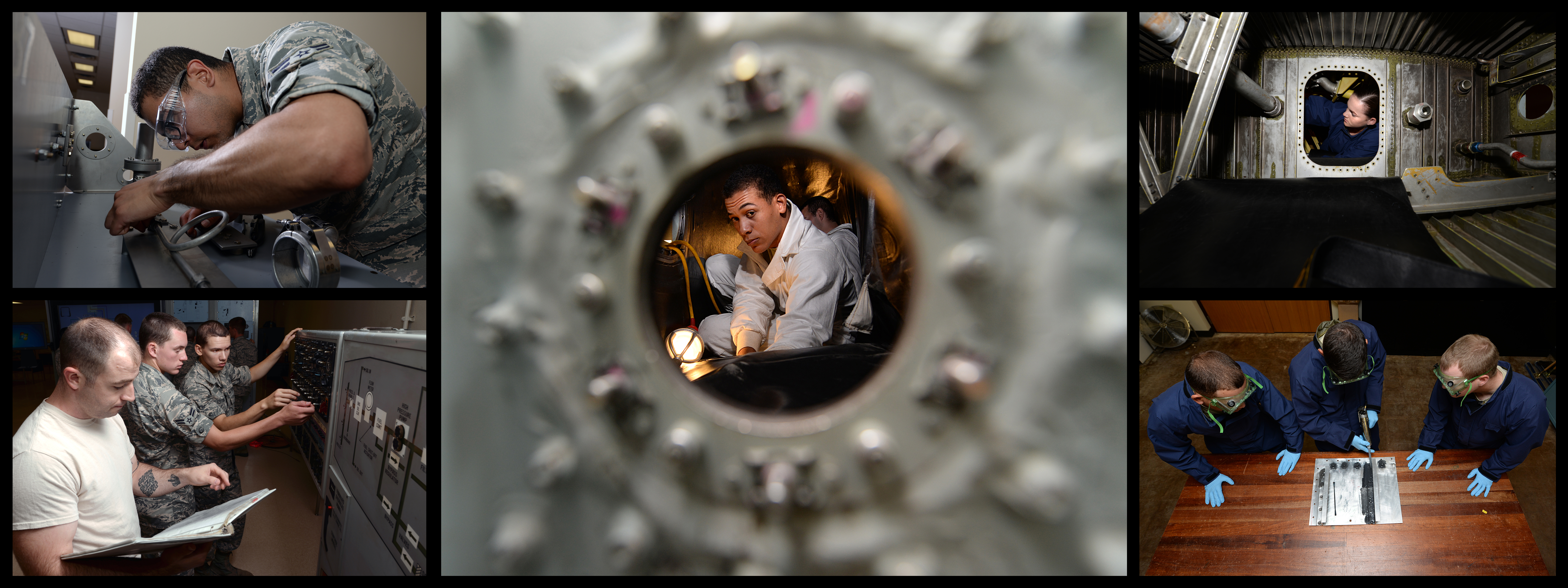Aircraft Fuel Systems Apprentice Course

(U.S. Air Force photo story by Senior Airman Kyle E. Gese)
Block 1: Maintenance Fundamentals
Block one introduces the basic maintenance fundamentals each graduate will use throughout their career. They are introduced to the Air Force mishap prevention and hazardous materials management programs. They receive training on the purpose and use of various types of Technical Orders. Next, the students master maintenance management concepts through introductions into data collection systems, the Integrated Maintenance Data System, and organizational structures. Each student also receives training on aircraft familiarization and corrosion control. Students are familiarized with the proper use and care of basic hand tools along with aerospace ground equipment.
Block 2: Aircraft Fuel Systems Operations
Block two introduces the students to electronic the students to electronic principals where they learn to interpret electrical circuits and perform testing on circuits using electrical test equipment. Finally, each student is introduced to the various sub-systems that make up the aircraft fuel system. In the classroom, students discuss the components and the operation of the Engine Feed, Transfer, Jettison/Dump, Refuel/Defuel, Scavenge, Vent and Pressurization, Air Refueling Receiver and Fuel Quantity Indication systems. Each student then performs an operational checkout of each system on an aircraft trainer.
Block 3: Fuel Tank Entry
Block three introduces the students to the heart of the course, aircraft maintenance. The first objective familiarizes the students with personal protective clothing and equipment required for their safety. Next, the students are introduced to the various types of aircraft fuel systems repair facilities. Aircraft preparation for maintenance, consisting of purging and depuddling are discussed and measured by performing various operations in the lab. Finally, each student is introduced to the principles and procedures relating to component removal, inspection, and installation. Each student will perform serviceability inspections on the components within each system.
Block 4: Fuel Cell Familiarization
Block four begins with fuel cell familiarization where different types of fuel cells are discussed. Proper fuel cell storage and handling procedures are explained and demonstrated to the students. Next, the students learn the procedures for leak source isolation of fuel cells. In the next objective, each student learns how to remove, inspect, and install a fuel cell. Fuel cell testing is then discussed followed by a performance objective in which students will perform fuel cell testing.
Block 5: Integral Fuel Tanks
Block five begins with integral tank familiarization. Students are then introduced to procedures for evaluating exterior leak points and locating leak sources in integral fuel tanks, followed by a performance objective accomplishing a pressure test. Once the leak exit point is found, the students perform another performance objective called blowback to identify the leak source inside the fuel tank. Fuel leak repair procedures follow, where the students learn the basic characteristics of sealants and application principles. A comprehensive performance objective follows in which students will remove defective sealant from a trainer and apply new sealant to simulate a repair on an aircraft.
More course descriptions coming soon ...